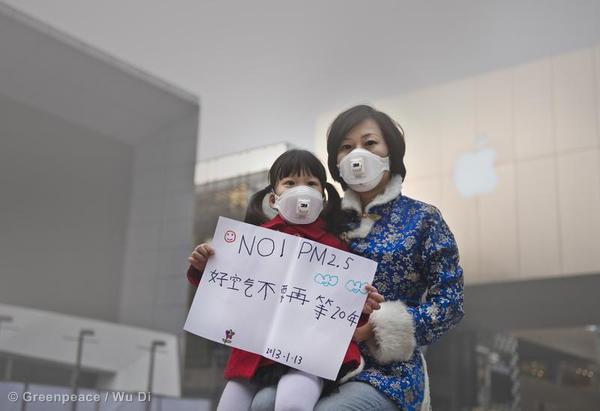Originally posted to Think Progress
Chinas air pollution crisis is more evident than ever. A new research report, conducted under the World Health OrganizationsGlobal Burden of Disease project, shows thatover 1.2 million premature deathswere caused by PM2.5 pollution (fine particles like soot, mostly resulting from fossil fuel combustion). That accounts for 15 percent of the total deaths in China during 2010 and 40 percent of global air pollution-related deaths. The data also showed that Chinese peoples average exposure to PM2.5 increased 50 percent from 1990 to 2010, compared to 10 percent globally.
Burning coal is a leading cause of air pollution in China, coal fired power plants release dangerous pollutants such as SO2, NOx and particulate matter that contributes to PM2.5 pollution. Of course, burning coal is also a major source of the carbon pollution that is changing our climate.
The crisis was especially severe in Beijing earlier this year, when air pollution levelssoared, hitting pollution levels 25 times that considered safe in the U.S.
After this so called airpocalypse, Chinese government officials and the public are paying increased attention to air pollution and the impacts of coal fired power plants. Seven high level government officials (including several vice ministers) issued a joint proposal during the annual political conference in March 2013, calling for a cap on coal consumption in key regions to clean up air pollution. TheBeijing governmenthas also released a plan to reduce air pollution.
Its clear that addressing Chinas air pollution crisis will require reducing coal consumption. In response to the air pollution crisis, Deutsche Bank issued a report on measures needed to bring air quality to acceptable levels. Their conclusion was that to meet national air quality targets even by 2030, Chinas coal consumption will need to peak and decline within this decade. That would have big impacts on the global coal market as Bloomberg Newsreported, Global shipments of thermal coal could be 18 percent lower than forecasted by 2015 should China, the biggest importer, toughen measures to curb air pollution to safe levels.
In fact, this trend has begun, and anote from Goldman Sachspredicts that 2013 will represent a watershed event for the seaborne market because Chinas thermal coal imports will fall this year, the first time that has occurred since the financial crisis in 2007-2008.
The prospect of reduced Chinese coal demand is already impacting the business plans of coal producers. A proposed coal export terminal in Australiawas recently put on holdwith the project backers citing weak Asian demand, as well as community opposition. The Wall Street Journalreportsthat for Chinese coal producers, Faced with slowing domestic demand and attempts to reduce pollution, diversifying into other countries and commodities is the way forward. Immediately after the Deutsche Bank report, Peabodys stock fell 4.6%, the result of an analyst citing the potential for Chinese coal demand to wane as the country fights pollution according to theMotley Fool.
The U.S. coal industry is betting on Chinas appetite for coal to justify its proposed Pacific Northwest terminals. But, the reality is that public opposition to coal is growing and people are demanding cleaner air. At the same time the government is creating policies to cap coal production and consumption, posing big risks for any coal producer counting on a growing Chinese coal market.
For more, see: The Myth of Chinas Endless Coal Demand: A missing market for US Exports


